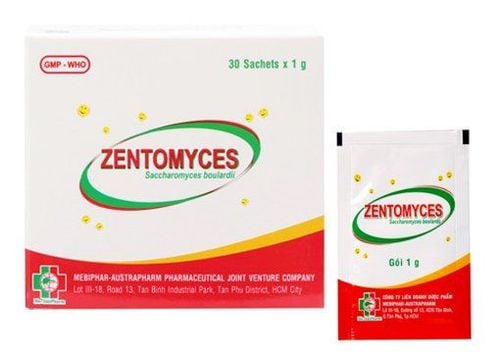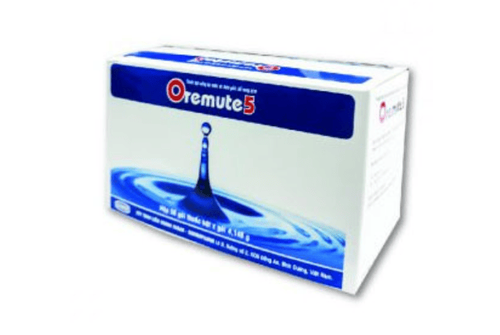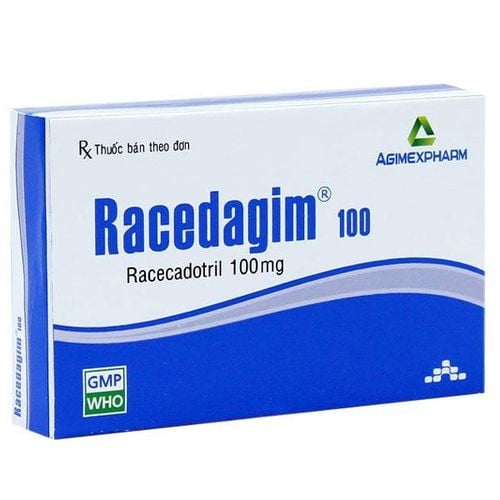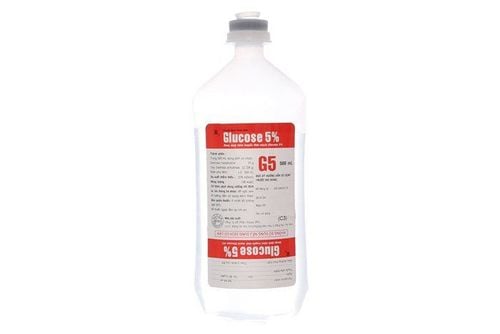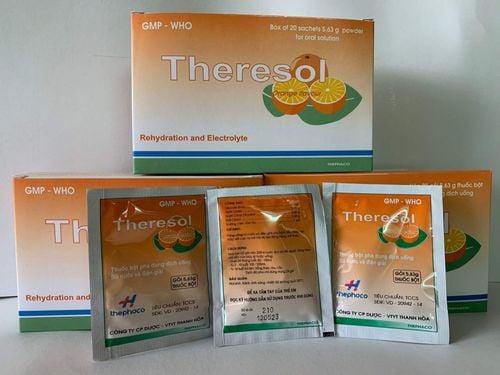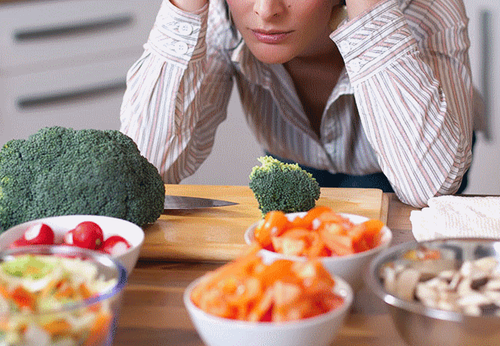This is an automatically translated article.
Food poisoning is a fairly common condition that can occur at any age. However, depending on the agent causing the poisoning and the level of consumption of foods at risk, the severity of the disease varies. So how mild are the symptoms of food poisoning?
1. What is food poisoning?
Food poisoning is a condition that occurs after eating or drinking food contaminated with bacteria, contaminated or containing substances that cause poisoning, spoiled food...
Usually the symptoms of food poisoning Acute food poisoning can appear minutes, hours, or days after eating foods that are contaminated with bacteria, toxins, or harmful chemicals.
Depending on the degree of poisoning, the effects and manifestations of the disease are different. With severe cases, the symptoms are often rampant, appear quickly and are very severe, with the risk of death if not treated promptly. As for mild cases of food poisoning, the symptoms are mainly on the gastrointestinal tract and cause fatigue for the patient.
2. Symptoms of mild food poisoning
Mild food poisoning is usually less life-threatening, but it can also cause symptoms that make the sick person tired and uncomfortable. Therefore, even if it is mild, it is necessary to detect it early so that appropriate care measures can be taken to minimize the impact of this condition on health. Some symptoms of mild food poisoning appear after eating or drinking unsafe food, including:
Abdominal pain: This is a very common sign of food poisoning, it appears quite soon after eating unsafe food. Because the toxic agents can be harmful to the body, it creates an irritating reaction that causes increased intestinal motility to speed up the elimination of toxic substances and thereby make the patient suffer from abdominal pain. However, signs of abdominal pain can be encountered in many different diseases, so it is often difficult to determine whether it is due to food poisoning or not. Nausea and vomiting: This is also one of the natural ways to make it easier for the body to eliminate toxic substances from the body. However, because vomiting a lot also makes the patient easily dehydrated, it is necessary to pay attention to replenishing water when vomiting.
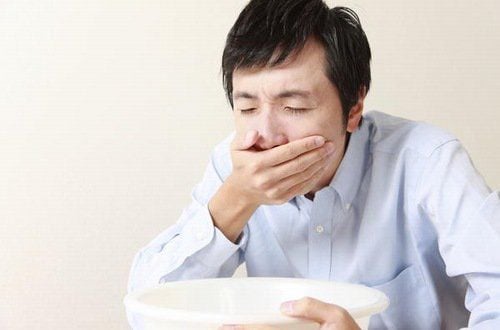
Buồn nôn và nôn mửa là một trong các triệu chứng ngộ độc thực phẩm nhẹ
Diarrhea : Is the condition of passing loose stools more than 3 times a day. This is a common symptom that often appears when poisoning, because the causes of poisoning cause inflammation of the digestive tract mucosa, making it less able to reabsorb water, causing diarrhea. This is also considered a measure to help the body eliminate toxins faster, in mild poisoning, diarrhea usually does not last more than 3 days, does not cause severe dehydration. Headaches: Certain toxins in foods affect the nervous system and cause headaches. With a mild degree, the patient usually only has a headache, but if it is severe, it may cause confusion, convulsions... Fever: With a mild degree of food poisoning, the patient may not have a fever or a mild fever. Fever is a protective symptom that helps the immune system work more efficiently. However, in severe cases, the patient can have a high fever above 39 degrees. Fatigue and loss of appetite: This is also a common manifestation of food poisoning. The patient feels fatigue and loss of appetite, which may be due to dehydration or signs such as fever, abdominal pain, diarrhea that make the patient not want to eat. Symptoms of the disease often occur in many people if the same food causes poisoning. Mild food poisoning symptoms usually appear and go away shortly with appropriate care. However, it should be noted if these manifestations are accompanied by bloody stools; high fever; the patient vomits too much; signs of dehydration such as sunken eyes, little urine, dry throat, dizziness; persistent diarrhea; patients with convulsions... need to go to a medical facility immediately for appropriate examination and treatment.
3. First aid for food poisoning
First aid for food poisoning is essential to help reduce the risk of serious illness, first aid measures when realizing that a patient has food poisoning include:
Induce vomiting: In case if If the patient has no symptoms of vomiting, then it is necessary to induce vomiting to limit the toxins entering the body. The first first aid measure should be to stimulate the person with poisoning to vomit the food in the stomach out. It is possible to use washed hands to put on the patient's tongue to stimulate vomiting, the more food the patient can vomit in the stomach, the better. When carrying out vomiting, especially children, it is necessary to put the patient on his side, slightly elevated the head so that vomited waste does not back up into the lungs and does not cause aspiration for the patient. For people with severe food poisoning who have been comatose, they should not stimulate vomiting because it will easily cause choking and suffocation, dangerous to life.

Khi gặp triệu chứng ngộ độc thực phẩm nhẹ bạn có thể sơ cứu bằng cách gây nôn
Drink lots of water: After the patient vomits and has diarrhea, the body will lose water and electrolytes. Therefore, it is necessary to carry out rehydration and electrolytes for the patient by giving him a lot of filtered water, drinking oresol water or drinking roasted rice water to compensate for the patient's electricity. But to use oresol safely, patients should note:
Always read the instructions for use carefully, how to mix the correct ratio. Because if mixed with the right ratio to reach the right osmolality, mixing too little water makes the patient more susceptible to dehydration or more water than usual will also be dangerous, even death. Use only reconstituted oresol solution for 24 hours, store well to avoid contamination. Because the reconstituted solution can be contaminated if left for too long and endanger the patient. Do not divide a packet of oresol and mix it many times because it is possible that the components are not homogeneous and easily cause the wrong volume when mixed. When you have diarrhea, you should avoid flavored oresol, especially orange because it can stimulate and aggravate the condition. Do not boil the reconstituted oresol solution because then it will lose the effect of the drug, evaporate and increase the osmolality similar to when mixed with little water. Do not mix with mineral water because the mineral ingredients will distort the concentration, only mix oresol with boiled water to cool. When more than one person is poisoned, do not give the same drink to sick people because that can increase the toxicity of people with mild cases. Should call an ambulance or take the patient to the nearest medical facility for appropriate examination and treatment. In particular, the cases of food poisoning are children, the risk of severe illness will be higher than that of adults. Or in cases where the patient shows signs of fever, severe symptoms such as high fever, lethargy, coma, diarrhea, etc., they should immediately go to the nearest medical facility for treatment. . Note that the sick water should not be given anti-diarrheal medicine, because this is a reaction to help eliminate toxins. Just focus on rehydration, eat light and easy to digest, supplement with vitamins and minerals.
Food poisoning, although mild, can affect the health of the patient. Therefore, the most important thing is to pay attention to reasonable disease prevention measures such as eating cooked and drinking boiling water, washing hands after going to the toilet and before eating, avoiding rancid foods, foods containing preservatives. preserved or processed food ...
Follow Vinmec International General Hospital website to get more health, nutrition, and beauty information to protect the health of yourself and your loved ones in the family. family.
Please dial HOTLINE for more information or register for an appointment HERE. Download MyVinmec app to make appointments faster and to manage your bookings easily.




